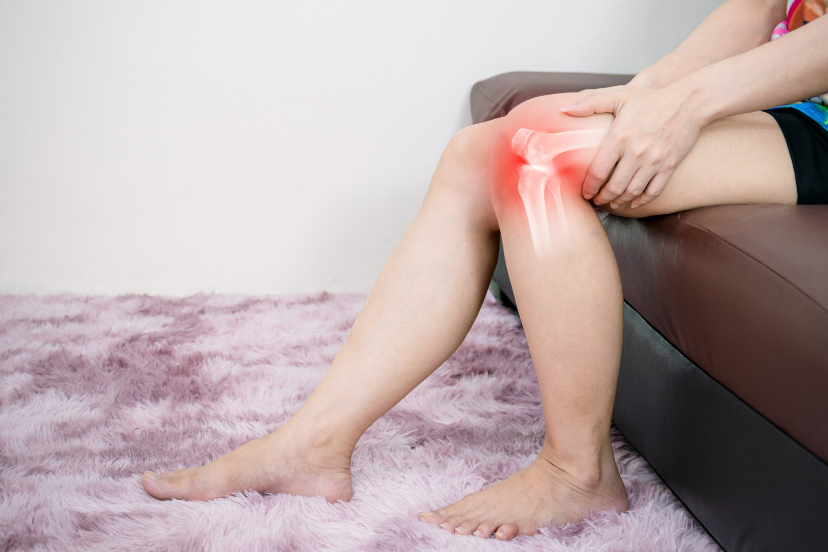Exploring the Vital Link Between Osteoporosis and Joint Health
Introduction to Osteoporosis and Joint Health
When we talk about Osteoporosis and joint health, we’re addressing not only bone density but also how bones and joints work together to support movement and stability. Osteoporosis, characterized by weakened bones prone to fractures, directly impacts joint health by altering the structural integrity of the skeletal framework. This article explores the nuances of this relationship and offers insights into prevention and management strategies.
What is Osteoporosis?
Osteoporosis is a condition where bones become brittle and fragile from loss of tissue, typically as a result of hormonal changes, deficiency of calcium or vitamin D, or lack of physical activity. This deterioration increases the risk of fractures, especially in the hips, spine, and wrists.
The Impact on Joint Health
How does Osteoporosis and joint health intersect? Bones and joints are integral parts of our musculoskeletal system. Joints, where bones meet and articulate, rely on strong, healthy bones for stability and function. When bones weaken due to osteoporosis, joints become more susceptible to wear and tear, leading to conditions like osteoarthritis and increased joint pain.
Symptoms of Osteoporosis and Joint Issues
Identifying symptoms of osteoporosis early can help in managing joint health effectively. Symptoms include:
- Bone fractures: Easily fractured bones, particularly in the spine, hips, and wrists.
- Joint stiffness: Reduced flexibility and increased stiffness, especially in weight-bearing joints.
- Loss of height: Compression fractures in the spine can lead to a noticeable decrease in height over time.
- Joint pain: Increased discomfort in joints due to compromised bone strength.
Causes of Osteoporosis and Its Impact on Joints
Understanding the causes of osteoporosis sheds light on its impact on joint health. Factors contributing to osteoporosis include:
- Age: Bone density decreases with age, increasing susceptibility to osteoporosis.
- Hormonal changes: Reduced estrogen levels in women and testosterone in men contribute to bone loss.
- Nutritional deficiencies: Inadequate intake of calcium and vitamin D affects bone strength.
- Lifestyle choices: Lack of exercise, smoking, and excessive alcohol consumption exacerbate bone loss.
Prevention Strategies for Osteoporosis and Joint Health
Prevention is key when it comes to Osteoporosis and joint health. Adopting healthy habits can significantly reduce the risk and mitigate its impact:
- Balanced diet: Ensure sufficient calcium and vitamin D intake through diet or supplements.
- Regular exercise: Weight-bearing exercises and strength training promote bone density and joint health.
- Avoidance of smoking and excessive alcohol: These habits accelerate bone loss and hinder bone regeneration.
- Bone density screenings: Regular check-ups help in early detection and intervention.
- Medication when necessary: Consult with healthcare providers about medications to prevent or treat osteoporosis.
FAQs:
1. What age group is most at risk for osteoporosis?
- Osteoporosis primarily affects older adults, especially women post-menopause and men over 50.
2. How does osteoporosis affect joint flexibility?
- Weakened bones can lead to joint stiffness and reduced range of motion, impacting flexibility.
3. Can osteoporosis lead to joint deformities?
- Yes, severe osteoporosis can alter bone structure, potentially leading to joint deformities over time.
4. What exercises are beneficial for joint health in individuals with osteoporosis?
- Weight-bearing exercises like walking, dancing, and resistance training help maintain bone density and support joint health.
5. How can diet influence both osteoporosis and joint health?
- A diet rich in calcium, vitamin D, and other nutrients supports bone strength and overall joint function.
6. Is osteoporosis reversible with treatment?
- While osteoporosis itself may not be reversible, early diagnosis and treatment can prevent further bone loss and reduce fracture risk.
Conclusion
In conclusion, Osteoporosis and joint health are closely intertwined aspects of musculoskeletal health. By understanding the causes, symptoms, and prevention strategies outlined in this article, individuals can take proactive steps to maintain strong bones and healthy joints throughout their lives. Prioritizing bone health through lifestyle choices and medical intervention when necessary ensures a better quality of life and reduced risk of fractures and joint complications. Stay informed, stay active, and prioritize your skeletal health—it’s the foundation of your mobility and independence.




